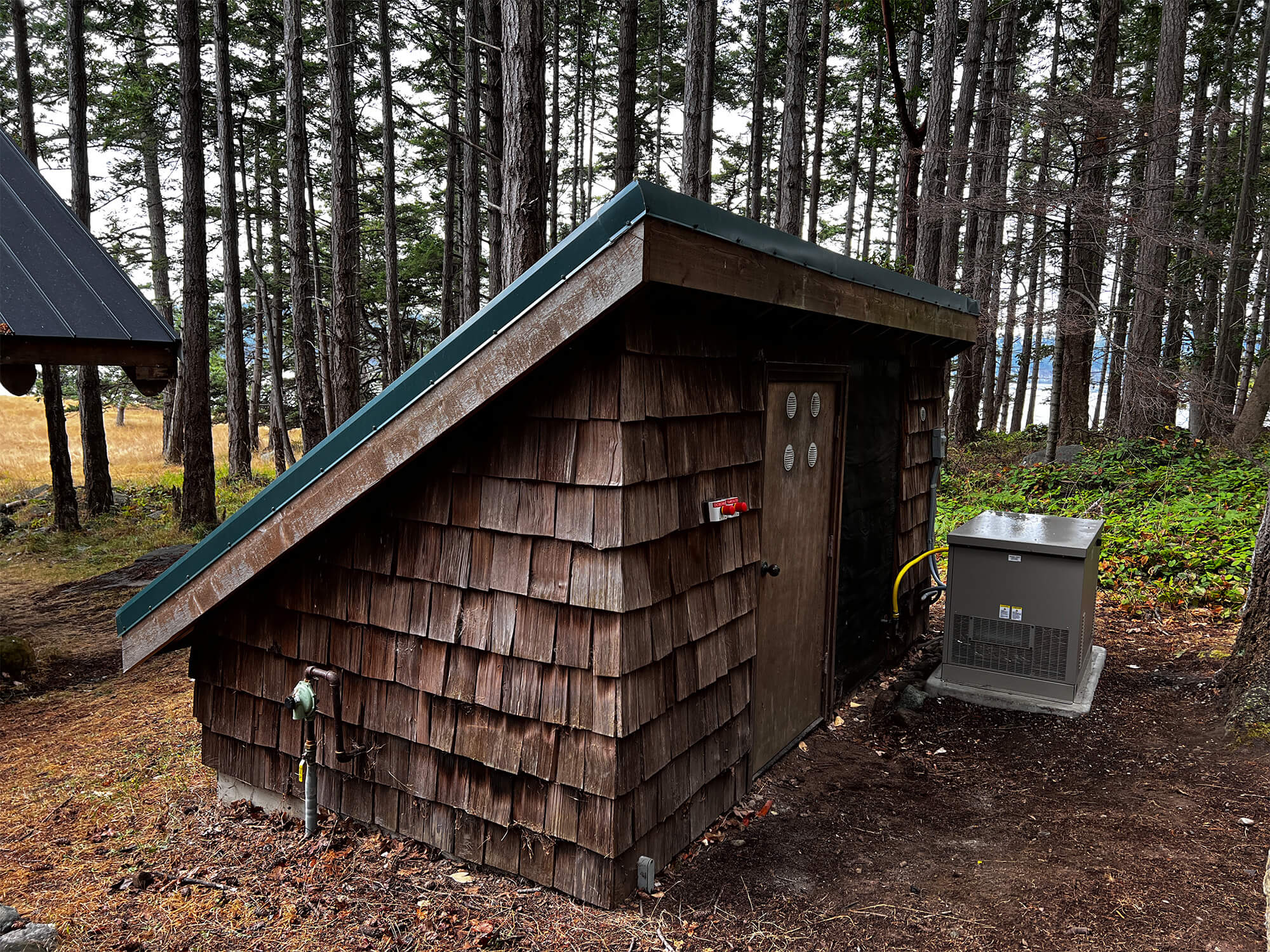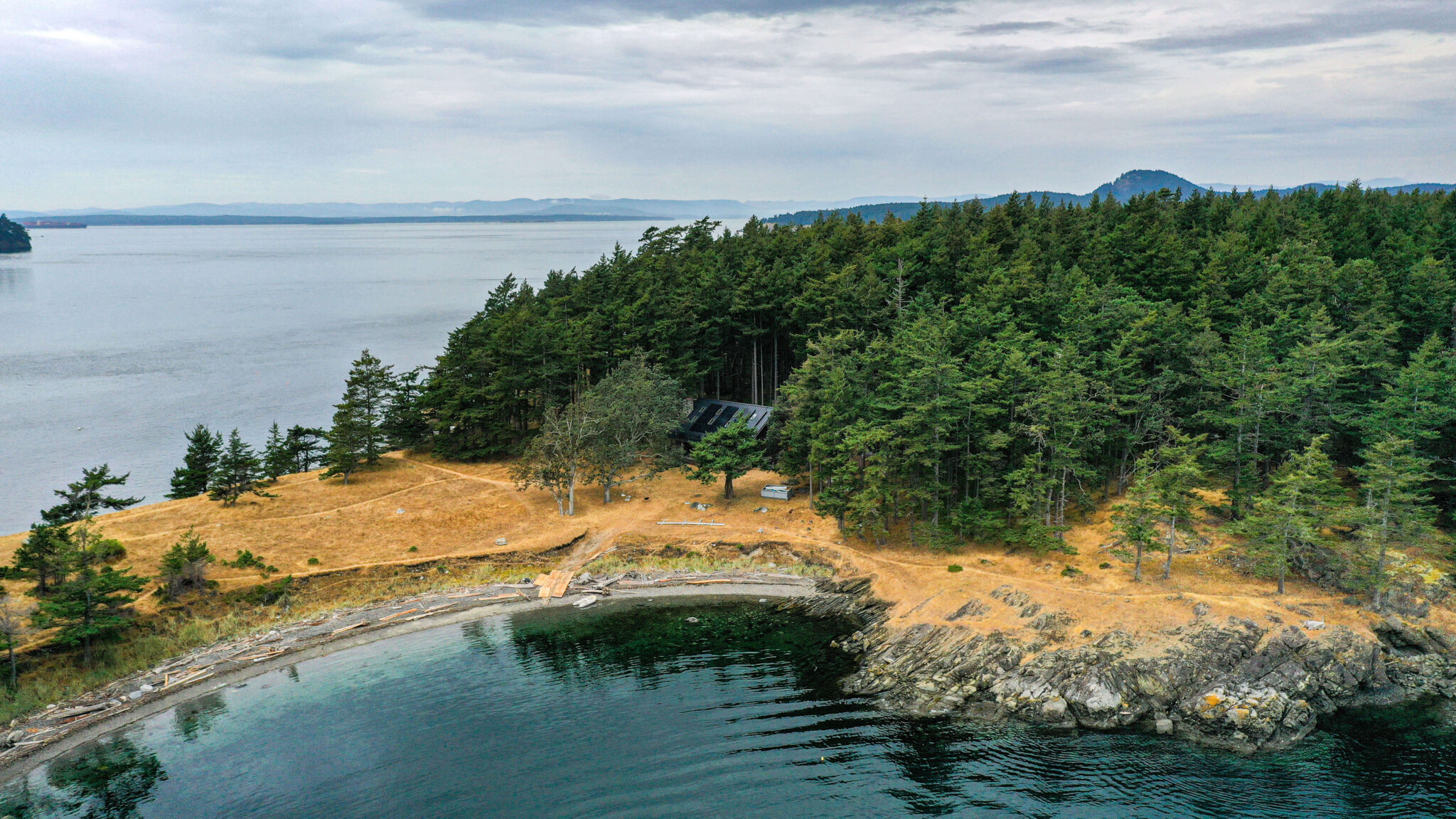Living on your own terms
Say you’re living far away in a remote mountain, or in this situation, on an island in Puget Sound where the utility grid has no way and most likely no intentions to connect your home to the grid anytime soon. If so, an off-grid solar and battery system will be your way to be independent of the grid and sustainably energize your remote lifestyle!

The Off-Grid Problem
When your home is off-grid, it means that there is no external source of power. So, off-grid homeowners are left to provide their means to keep the lights on. Traditionally, this meant using firewood, natural gas, or diesel generators to heat and energize the home. Firewood is excellent for heating homes and maintaining the cabin feel alive, although gas and diesel generators require routine fill-ups of the on-site gas or diesel storage equipment. Although you are off-grid, you still rely on off-site sources of electricity; whether you buy or chop your wood, usually, folks have to buy gas or diesel for your generators.
Off-Grid System Key Terms
Home Energy Management System
It is the equipment to control how you use, store, and generate electricity. For Off-grid systems, this is vital to ensuring you have enough power to last you through the winter or long days of low solar production.
Autonomy
Often referred to as days of autonomy is how long your Energy Management System can provide electricity to the loads without solar power generation. Meaning, that your battery backup system is what ultimately gives you the capacity to keep the power on while the sun doesn’t shine. The number of loads powered also affects how long the battery system will last.
State of Charge (SOC)
It measures the amount of energy available in a battery at a specific point in time, expressed as a percentage. Understanding the SOC of your battery backup system will help quantify how much longer you can run power solely on the batteries.
AC vs. DC Coupled
Off-Grid systems are unique because they don’t connect to the grid. This means some systems don’t need alternating current (AC) to power the lights and appliances. If the loads are all direct current (DC), then the DC energy from the solar power doesn’t need to be inverted to AC. Furthermore, this would require that the battery system matches the output necessary to power the loads in the home.
Generator Tie-in
It is when a generator integrates into the home energy management system. Typically, gas generators are a worst-case scenario piece of equipment. During times of no to small amounts of solar energy production, generators can help the battery system to keep the power flowing.
Closed-loop vs Open-loop communications
Closed-loop communication is vital for maintaining your solar and battery systems in an optimum state. It is because it permits the home energy management system to communicate with each other and self-correct in case of battery or solar panel failures. With open-loop communications, if a couple of solar panels fail, the batteries may receive a low rate of charge, which may reduce the backup capacity of the batteries.
Battery Management System (BMS)
The BMS is the equipment and software that communicates to and from the batteries. The BMS manages the draw of energy from the batteries to power the loads or the energy flow from the solar panels charging the batteries.
Finding the Off-Grid Solution
If you genuinely want to become freed from the grid and the need to purchase your means to heat and power your home, then a home energy management system is the solution for you! Here are the two first steps in assessing your situation to begin the journey of creating your means to live independently of the grid.
Assessment - Understanding loads
Home load is the most critical factor that decides the system size and costs. Knowing how much electricity is consumed by the lights, appliances, heating/cooling, etc., will determine how much power needs to draw from the home energy management system at any time of the day.


Assessment - Gathering information
We’ll need to gather as much information as possible to assess your site’s autonomy capacity. Conducting remote and on-site assessments of the off-grid site is vital to capturing all the details necessary for integrating a home energy management system that meets the homeowner’s needs. We can tailor the system to meet your needs and budget with the maximum system capacity identified.
Part 2: Details of equipment, installation and monitoring your Off-Grid system
Thank you for reading about the essential terms used in Off-Grid systems and what information is necessary to start such a project! We hope you understand why off-grid systems are an excellent option for living more sustainably and self-sufficiently; next week, we will share the design process, the equipment we use, the installation, and how to monitor and maintain the off-grid system.
If you have any questions about Off-Grid solutions for your home or property, feel free to reach out in our General Contact Form below!


